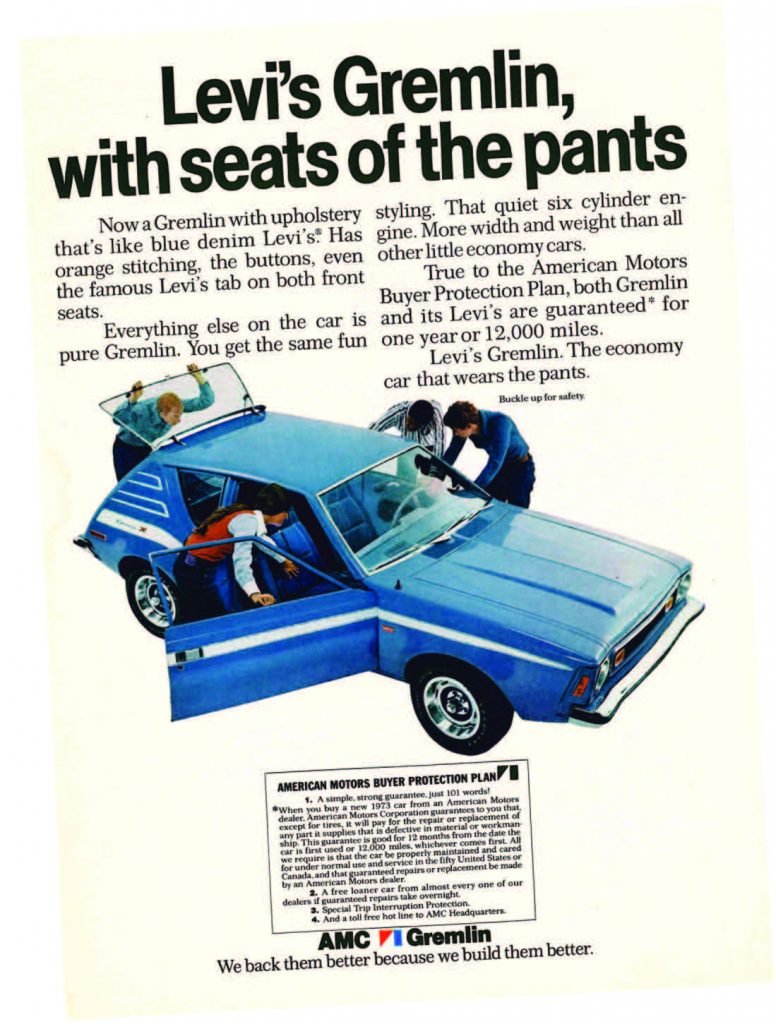The Genes of our Jeans
September – October 2015
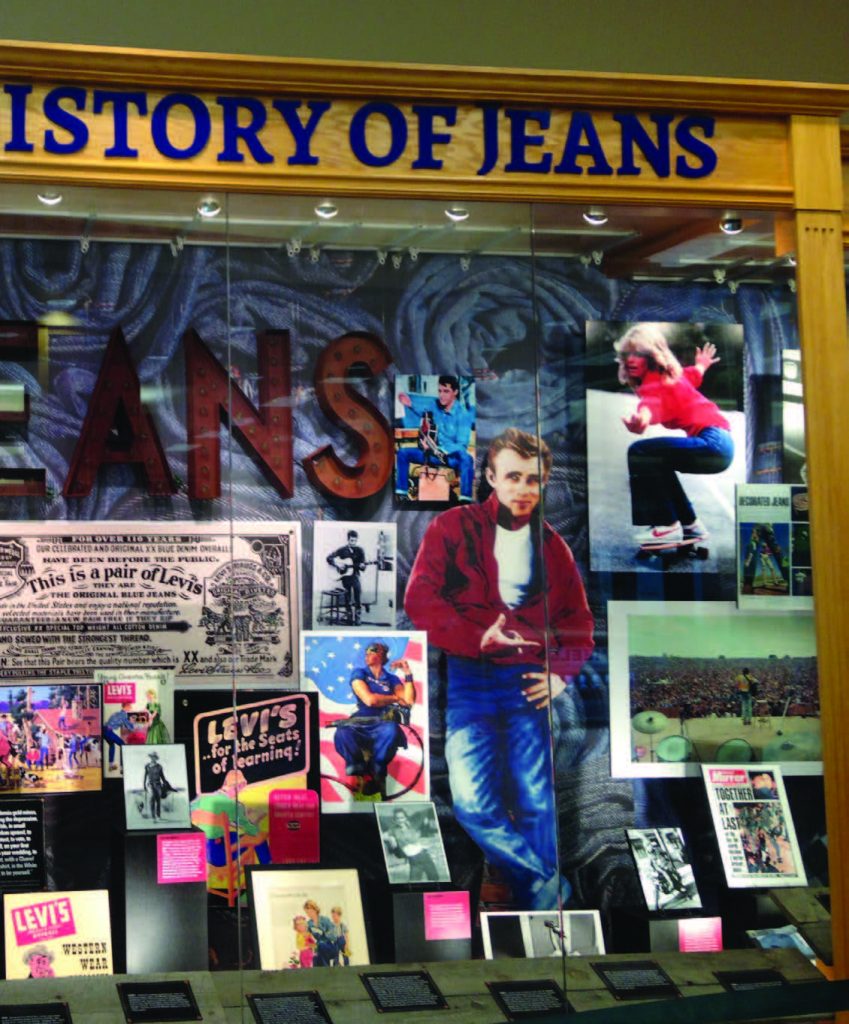
The Genes of our Jeans
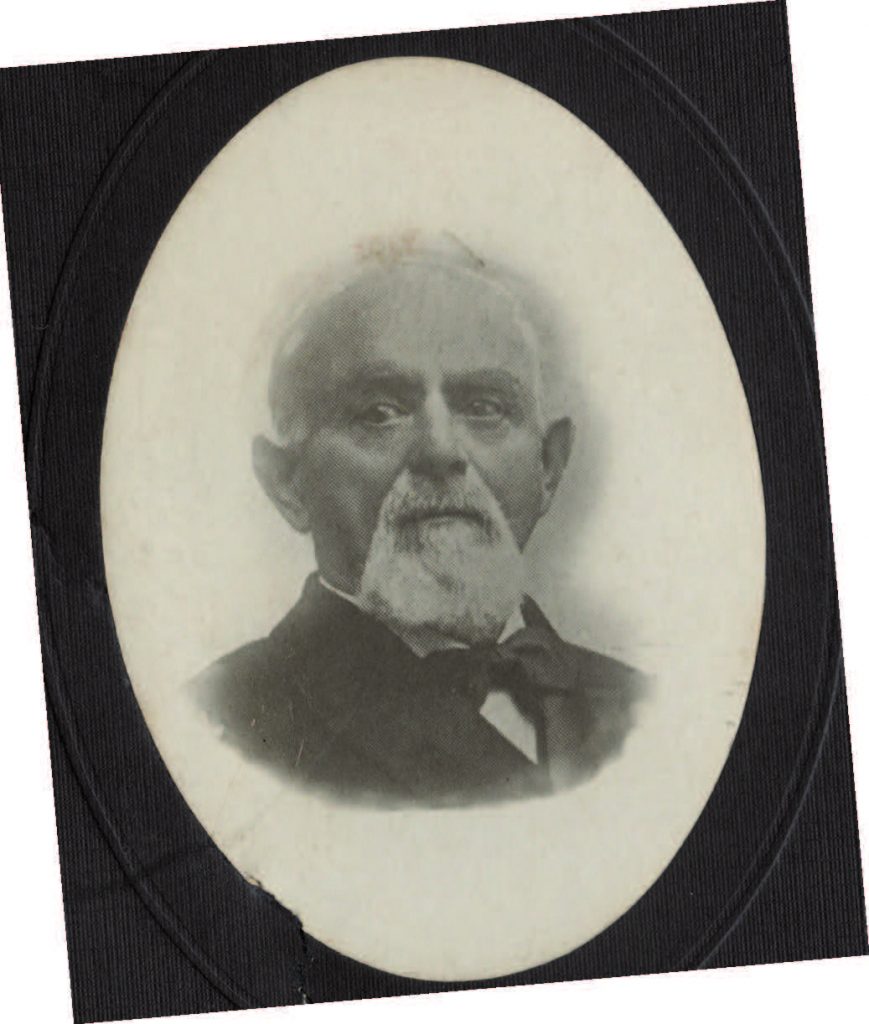
JACOB DAVIS, RENO’S UNSUNG INVENTOR, CREATES A FASHION LEGEND.
BY KATHLEEN PAINI CLEMENCE
When a jean-clad crowd filters into Reno’s Knitting Factory on concert nights, it’s unlikely many know they are entering the site where fashion history was made.
Formerly known as 31 Virginia Street, the property housed the family home and tailor shop of Jacob William “J.W.” Davis. Although Jacob’s work normally consisted of making tents, wagon covers, and horse blankets, he accepted odd jobs from time to time.
When a woman requested a pair of strong pants for her portly husband to wear while chopping word, Jacob hit upon the idea of reinforcing the pant’s pockets with copper rivets he normally used for horse blanket straps. He sold the pants to the woman for $3 a pair—about $57 at today’s prices—and the legend that would become Levi’s blue jeans was born.
FINDING HIS TRADE
Trained as a tailor in what is now Latvia, Jacob immigrated to the United States in 1854 and worked his trade from New York to Maine, and eventually San Francisco and Weaverville, Calif., before heading into the Canadian wilderness to sell general merchandise to miners in 1858.
How he and his wife Annie Packscher met is unclear; nevertheless, the pair married in Victoria, Canada on Jan. 3, 1865. Annie was one of four sisters and one brother who emigrated from Prussia (now Poland). The newlyweds had a short stay in Victoria prior to settling in what is now the Cariboo Regional District of British Columbia where they partnered with Frederick Hertlein in a brewery business.
After two years, the couple returned to San Francisco where Davis unsuccessfully ventured into the coal business.
NEVADA BOUND
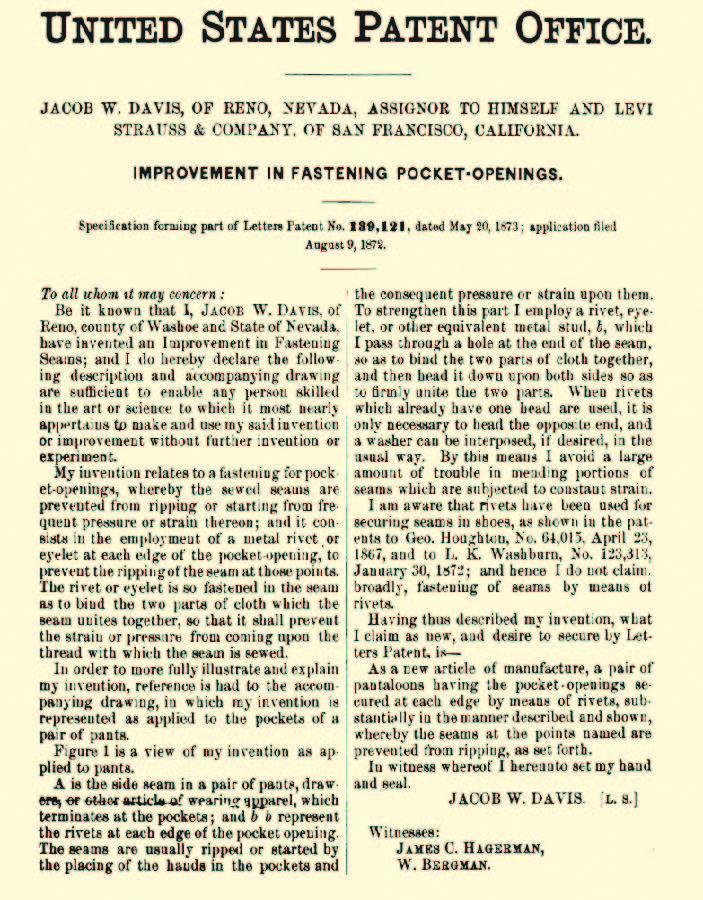 At the height of the Comstock Lode, it is estimated that approximately 25,000 people resided in Virginia City. One was Annie’s older brother Simon Packscher who was proprietor of the International Cigar Store in the International Hotel, considered one of the West’s finest lodging establishments at the time.
At the height of the Comstock Lode, it is estimated that approximately 25,000 people resided in Virginia City. One was Annie’s older brother Simon Packscher who was proprietor of the International Cigar Store in the International Hotel, considered one of the West’s finest lodging establishments at the time.
In 1867, the Davis family moved to join Simon in Virginia City and Jacob worked with him for several months. When the relationship dissolved, he resumed tailoring, opening a shop on C Street where the family lived and he worked.
In May 1868, Jacob moved his family to the new town of Reno where he immediately began working again with Frederick Hertlein. Although they had been partners in the Canadian brewery, this time Jacob did not have the money to invest in the new venture. Frederick was the sole owner of the Reno Brewery built on Commercial Row, directly across from the newly completed Central Pacific Railroad depot. Even in that prime location, the brewery profits were not enough to support two families, so Jacob again took up tailoring. He established his shop at 31 Virginia Street, between Second Street and Commercial Row, most likely in the summer of 1869.
FASHION HISTORY MADE IN RENO
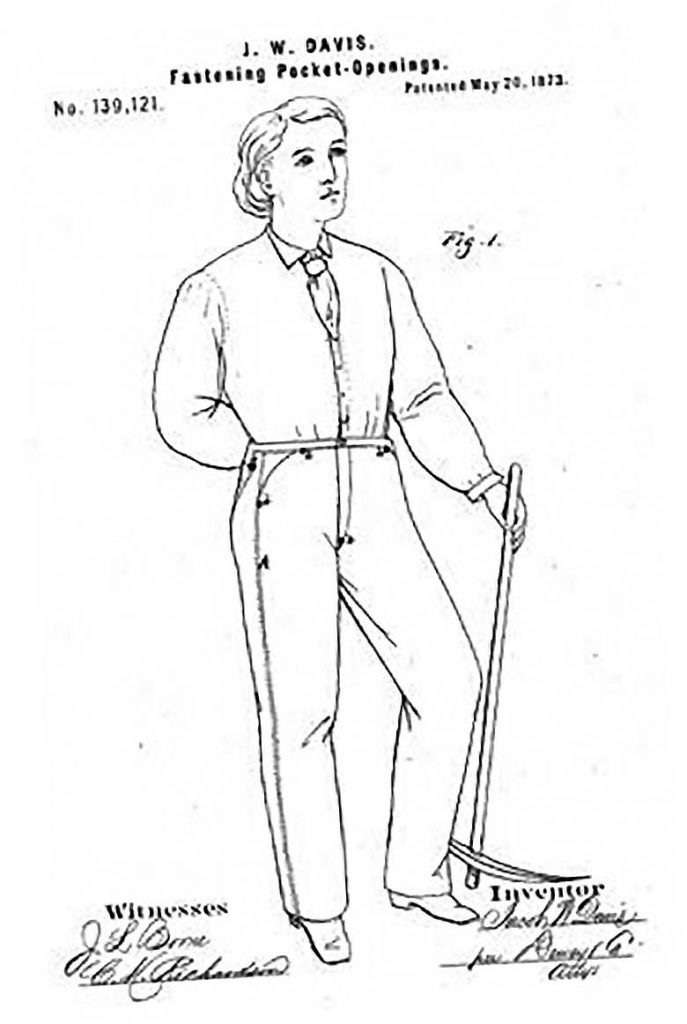 Around September 1870, Annie’s older brother Simon had traveled from Virginia City to San Francisco. Jacob wrote Simon that he was in need of ducking material for what had become his tailoring business, but he was not acquainted with any clothing business in San Francisco. Simon had a cousin, who set up a meeting with a man named Levi Strauss, and Simon purchased Jacob’s first bill of goods from Levi Strauss & Company, a dry-goods store that opened in 1853.
Around September 1870, Annie’s older brother Simon had traveled from Virginia City to San Francisco. Jacob wrote Simon that he was in need of ducking material for what had become his tailoring business, but he was not acquainted with any clothing business in San Francisco. Simon had a cousin, who set up a meeting with a man named Levi Strauss, and Simon purchased Jacob’s first bill of goods from Levi Strauss & Company, a dry-goods store that opened in 1853.
The material from that purchase was used to make that first pair of riveted pants for the woman with the portly husband in January of 1871.
Jacob began purchasing goods directly from Levi Strauss & Company and produced about 200 pairs of riveted pants—made of white duck cloth during 1871-72, with a label reading “Patent Applied For”—prior to his patent application. The pants were sold for $3 a pair to storekeepers, surveyors, teamsters, farmers, and anyone who wanted them.
In July 1872, with sales going well, Jacob wanted to procure a patent to protect his idea. However, having spent much of his time and all of his earnings on his experiments and inventions, he noted: “My wife was crying and begged me not to spend another dollar in inventions, for we needed every dollar that I earned.” Thus, without the $68 needed for yet another patent application, Jacob decided to write Levi Strauss & Company and ask the company to cover the expense in exchange for half the patent rights. In that letter to Levi Strauss, Jacob writes “if the patent is granted I am willing to go either to San Francisco or New York to manufacture or represent a factory.” Levi Strauss took him up on his offer and in April 1873, the Davis family moved to San Francisco where Jacob assumed a foreman’s position to oversee the manufacturing of riveted work pants.
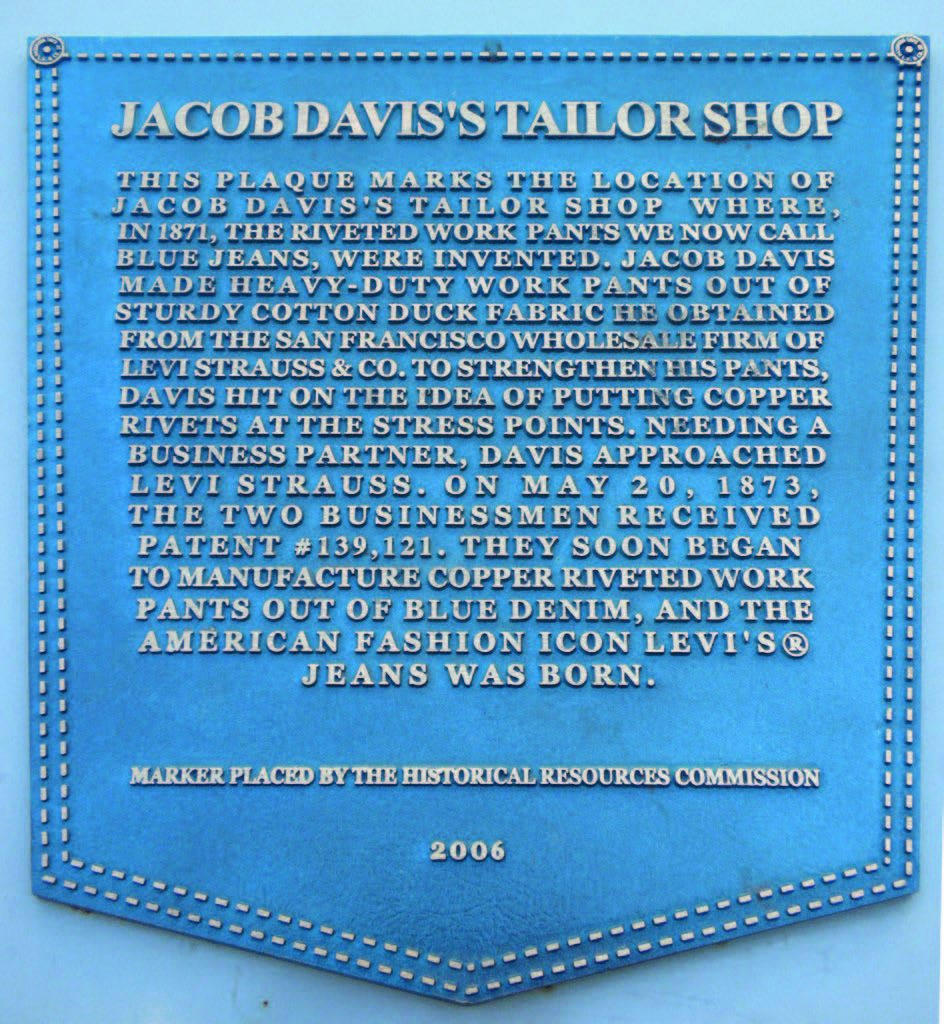
The patent for “Improvement in Fastening Pocket-Openings” was granted on May 20, 1873 to Jacob W. Davis and Levi Strauss & Company. That was the beginning of what today is the lucrative business of selling jeans in every color and style imaginable.
Residing in San Francisco for the remainder of their days, Jacob died in 1908 and Annie passed in 1912. They are buried side-by-side in the Davis family plot at Hills of Eternity Memorial Park, Colma, Calif., along with five of their children.
Always Inventing
Some of Jacob Davis’ inventions were hits but most were misses; he received rejections for a button fastened with a screw, ideas for a steam-powered canal boat, a model he “thought very useful for breaking up quartz and rock,” and other peculiar inventions.
He did receive patents for a tailor’s ironing and stretching board; a folding wardrobe for clothes—granted in Annie’s name; and, of course, his most enduring and profitable: the final patent for the improvement in fastening pocket-openings on May 20, 1873.
Blue Jeans Jam
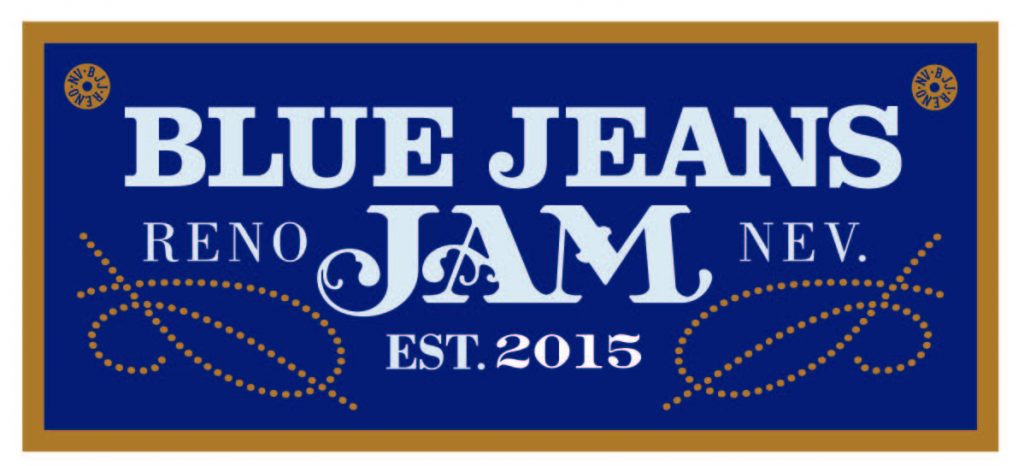 The Reno-Sparks Convention and Visitors Authority (RSCVA) will host the inaugural Blue Jeans Jam. The new event will be held Oct. 2-4, and is designed to celebrate the invention of one of the world’s most iconic products—riveted denim blue jeans—by Reno tailor Jacob Davis in the early 1870s.
The Reno-Sparks Convention and Visitors Authority (RSCVA) will host the inaugural Blue Jeans Jam. The new event will be held Oct. 2-4, and is designed to celebrate the invention of one of the world’s most iconic products—riveted denim blue jeans—by Reno tailor Jacob Davis in the early 1870s.
According to RSCVA President and CEO Chris Baum, “The fact that the world’s favorite item of clothing was invented and patented in Reno by Mr. Davis is unknown to most locals and denim fans worldwide…but not for long.” The Blue Jeans Jam is a three-day festival featuring fun and unique activities around Reno, Sparks, and North
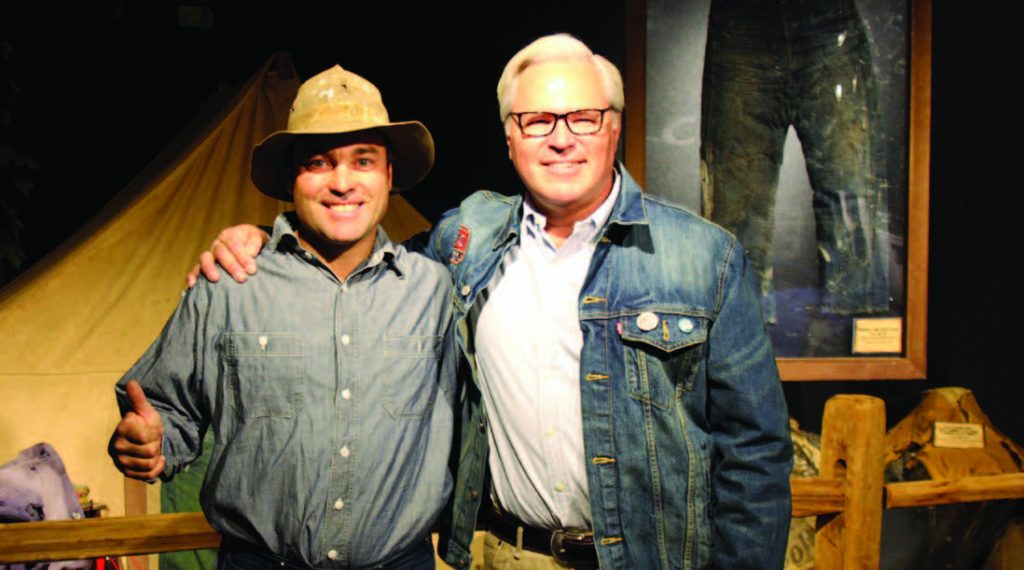
Lake Tahoe. Planned events include:
- Jeaneology – scholarly presentations on the history of blue jeans and their impact on popular culture—including adventure seeker and denim collector Brit Eaton, aka Indiana Jeans—held at the Reno-Sparks Convention
- The Jean Pool – a retail emporium for vintage jeans, designer denim, and accessories located in the ballroom of the Reno-Sparks Convention
- Jacob’s Joint – a pop-up bar and restaurant that features a special menu, crafted from local, farm-to-table meats and produce, that will only be available during the Blue Jeans Located at Heritage, in the Whitney Peak Hotel.
- Additional features include rock ‘n’ roll and country concerts, specials at area health spas, denim fashion shows, and more.

